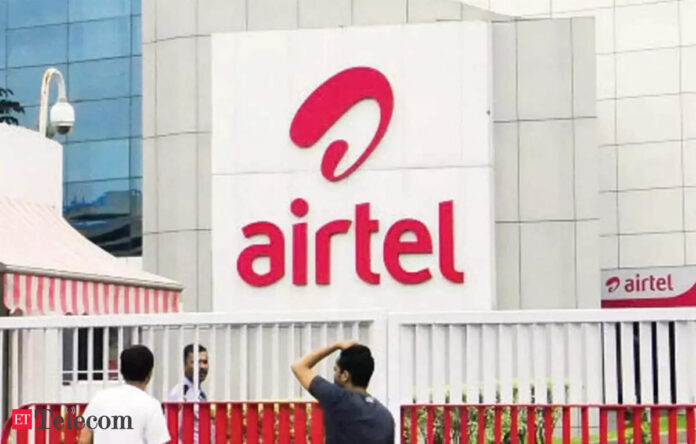In Short:
In 2023, 750 million more people gained 5G coverage, mainly in India, where Bharti Airtel and Reliance Jio offer unlimited services. However, 43% of the global population, or 3.45 billion people, still don’t use mobile internet. The GSMA report highlighted that while smartphone ownership is growing in rural India, many still face barriers to connectivity and usage. Closing the usage gap could boost the global economy by $3.5 trillion by 2030.

Significant Growth in 5G Access
Nearly 750 million individuals gained access to 5G coverage globally in 2023, with a substantial portion of this expansion attributed to initiatives by operators in India, as highlighted in a recent report by the GSMA released on Wednesday. Among the four major operators in India—three private and one government-owned—Bharti Airtel and Reliance Jio are currently providing unlimited 5G services at no additional cost to consumers.
Unrealized Connectivity Benefits
Despite these advancements, the potential benefits of mobile connectivity remain largely untapped, with 43 percent of the global population—approximately 3.45 billion people—still not using mobile internet, as per the GSMA’s “State of Mobile Internet Connectivity 2024” report. The findings, supported by funding from the UK Foreign, Commonwealth and Development Office (FCDO) and the Swedish International Development Cooperation Agency (Sida), indicate a continuous but slowing rise in mobile internet usage worldwide.
Smartphone Adoption Trends
Interestingly, in contrast to trends observed in many other surveyed countries, smartphone ownership among rural populations in India rose from 2022 to 2023. Nonetheless, the overall rate of smartphone adoption appears to be declining, as the report suggests.
Improvements in Consumer Experience
The mobile network consumer experience has shown significant enhancements in 2023, with global average download speeds increasing from 34 Mbps to 48 Mbps. This represents the largest proportional and absolute increase recorded to date. Notably, South Asia experienced a remarkable 70 percent surge in average download speeds, primarily driven by India’s rollout of 5G services.
5G’s Acceleration Compared to Previous Technologies
The GSMA reports that, just four years post-launch, the number of global 5G connections surpassed 1.5 billion by the end of 2023, marking it as the fastest-growing mobile broadband technology to date. In contrast, it took 10 years for 3G to accomplish this milestone and over five years for 4G. By 2023, 5G connections have outnumbered those of 2G and 3G, and it is anticipated to become the predominant global technology by the decade’s end.
Challenges in Scaling 5G
However, the GSMA report indicates that while 5G deployments are gaining momentum in many low- and middle-income countries (LMICs), it is unlikely to become the prevailing mobile technology in these regions by 2030. Forecasts suggest that by 2030, 5G penetration in LMICs will reach around 55 percent, in stark contrast to 120 percent in high-income countries.
Barriers to Adoption and Business Growth
Furthermore, the report identifies that in many markets, including those where 5G adoption is advancing, the business-to-business (B2B) sector—which operators anticipate will generate significant revenue from 5G—has not achieved scalability. Most operators have yet to implement 5G standalone (SA) networks, crucial for realizing 5G’s full potential. The substantial investment required for 5G deployment, alongside stagnant or declining returns in many markets, presents challenges for operators.
5G Fixed Wireless Access Adoption
According to the report, 5G fixed wireless access (FWA) has emerged as a successful early implementation, achieving over 5 percent household adoption in nations such as Kuwait, Saudi Arabia, the UAE, Austria, the US, Germany, and Australia. However, in many countries, 5G FWA adoption remains limited, indicating a significant growth potential yet to be harnessed.
Demographic Insights on Mobile Internet Usage
The report reveals notable demographic differences in mobile internet use. In India, for example, men engage in an average of nine different weekly activities online, compared to 7.6 for women. Across all surveyed countries, literate mobile internet users report a broader range of weekly activities than those with lower literacy levels. Surprisingly, mobile internet users with low literacy in India average at least eight different activities weekly, surpassing both low-literacy and literate users in other analyzed countries.
Potential Economic Impact of Connectivity
The GSMA estimates that addressing the connectivity barriers faced by 3.45 billion unconnected individuals could lead to an additional USD 3.5 trillion in total GDP between 2023 and 2030. John Giusti, Chief Regulatory Officer at the GSMA, emphasized that while infrastructure improvements and mobile internet adoption are ongoing, significant digital divides persist. He noted that many users access mobile internet daily but often restrict their activities to just one or two tasks, underscoring the barriers of affordability, lack of skills, literacy, safety and security concerns, and a scarcity of relevant content and services.
Global Mobile Internet Connectivity Overview
The report indicates that approximately 4.6 billion people (or 57 percent of the global population) now utilize mobile internet on personal devices. Additionally, 350 million (or 4 percent) reside in largely remote areas without mobile internet access. Meanwhile, around 3.1 billion individuals (or 39 percent) live within mobile internet coverage but do not utilize these services. Bridging the usage gap could potentially contribute an estimated USD 3.5 trillion to the global economy up to 2030, with a significant share of this benefit accruing to LMICs.





